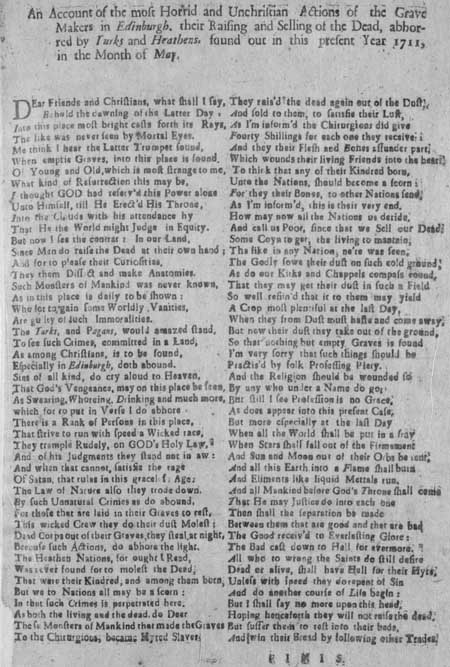Commentary
This account begins: 'An Account of the most Horrid and Unchristian Actions of the Grave Makers in Edinburgh, their Raising and Selling of the Dead, abhorred by Turks and Heathens, found out in this present Year 1711, in the month of May.' The rest of the broadside is written in verse. This is a very early warning about a practice that was to become increasingly common in the late eighteenth century, that of grave robbing to provide fresh cadavers for dissection. Until the Anatomy Act of 1832 the only legal way for a surgeon to get a cadaver was to claim those of executed murderers. After 1832 surgeons were permitted to use bodies of people who had died in workhouses, providing no-one claimed them within 48 hours of death. Reports recounting dark and salacious deeds were popular with the public, and, like today's sensationalist tabloids, sold in large numbers. Crimes could generate sequences of sheets covering descriptive accounts, court proceedings, last words, lamentations and executions as they occurred. As competition was fierce, immediacy was paramount, and these occasions provided an opportunity for printers and patterers to maximise sales.
View Transcription | Download PDF Facsimile
|
 |
Date of publication:
1711 shelfmark: S.302.b.2(068)
 View larger image
View larger image
|


